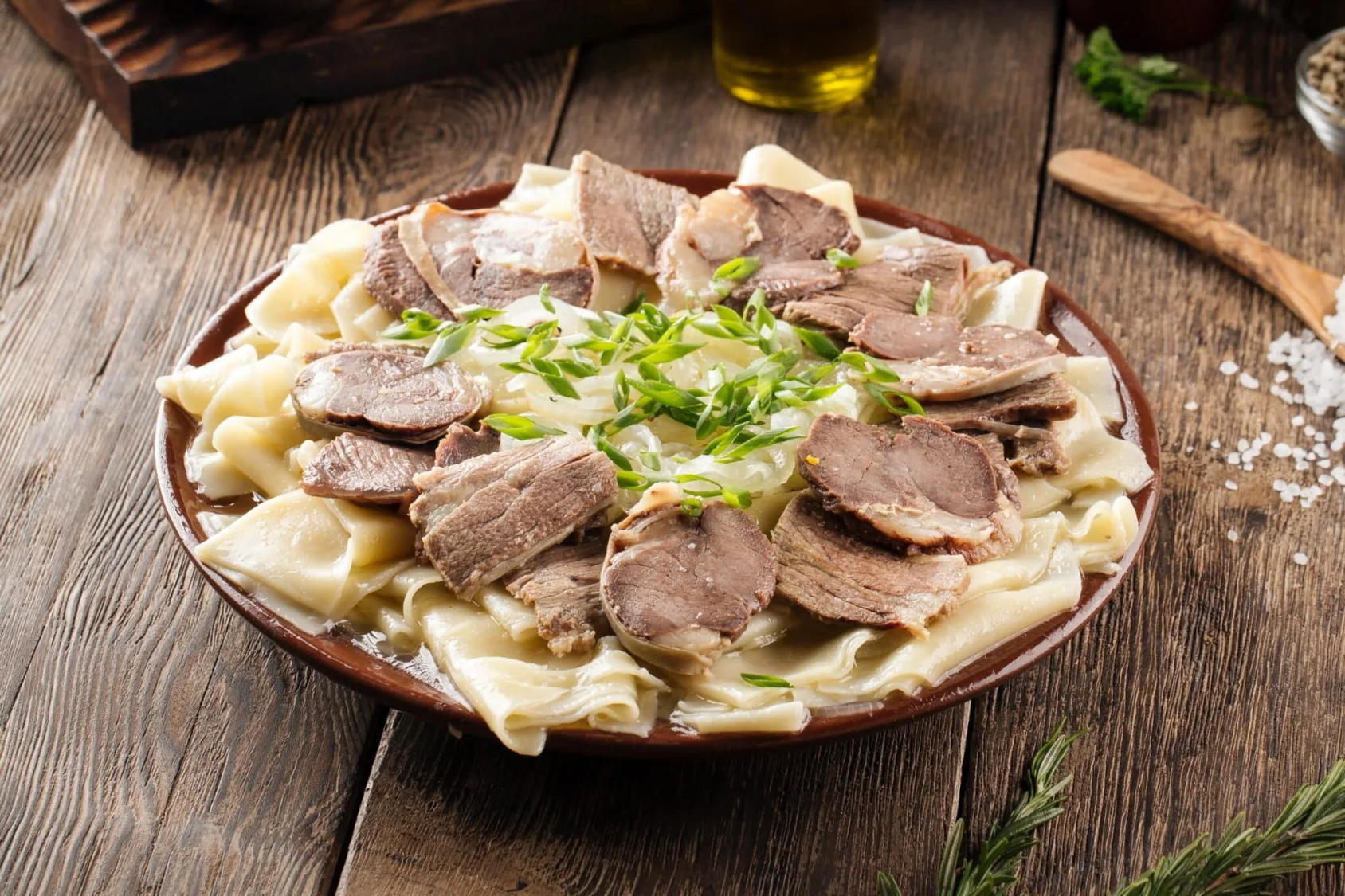
Beshbarmak
A traditional dish of boiled meat served over flat noodles with onion sauce.
Ingredients
- •Lamb or horse meat
- •Flour
- •Eggs
- •Onions
- •Black pepper
- •Bay leaves
- •Salt
- •Fresh herbs
Instructions
Prepare Meat
Boil meat with spices until tender
Make Noodles
Roll and cut flat noodles from dough
Cook Noodles
Boil noodles in meat broth
Assemble
Layer noodles with meat and onion sauce
Beshbarmak, which literally means "five fingers" in Turkic languages, is one of the most revered dishes in Central Asian cuisine, including Uzbekistan. This name comes from the traditional way of eating it - with one's hands. The dish consists of tender boiled meat (traditionally lamb or horse meat) served over large, flat noodles and topped with a flavorful onion sauce.
This dish has deep nomadic roots, dating back centuries when it was a staple among the horsemen of the steppes. The combination of meat and noodles provided the necessary energy for long journeys, while the simple cooking method made it practical for nomadic life. Today, it remains a symbol of hospitality and is often prepared for honored guests and during important celebrations.
The preparation of Beshbarmak is a labor of love that begins with making a rich broth by slowly cooking large pieces of meat with aromatic spices. While the meat simmers, the dough for the noodles is prepared from flour, eggs, and water, then rolled out very thin and cut into large, irregular squares. These noodles are then cooked in the same broth that was used to cook the meat, absorbing all the rich flavors. The onion sauce, known as "tuzdyk," is prepared by slowly cooking onions in the broth until they become soft and flavorful.
While lamb or horse meat is traditional, modern variations might use beef or even chicken. Some families add carrots or other vegetables to the broth for added flavor, and the thickness of the noodles can vary by region and family preference. The onion sauce might be seasoned differently, with some adding black pepper, garlic, or additional spices.
In Uzbekistan, Beshbarmak is served with great ceremony. The meat is typically carved into portions, with specific cuts traditionally reserved for different family members or guests based on their status or age. The noodles are laid on a large platter, topped with the meat, and the onion sauce is poured over everything. Hot broth is served separately in bowls and often sipped between bites. Fresh herbs like dill or parsley are commonly sprinkled on top.
From a nutritional perspective, Beshbarmak is a protein-rich dish, with a single serving providing approximately 400-500 calories. The dish is quite hearty and filling, making it ideal for cold weather. However, those watching their fat intake should be mindful, as traditional versions using lamb or horse meat can be quite rich. The dish contains gluten due to the noodles, so it's not suitable for those with celiac disease or gluten sensitivity. The broth can also be high in sodium, so individuals on low-sodium diets may need to modify the recipe accordingly.
